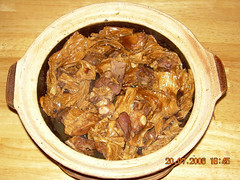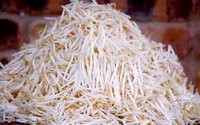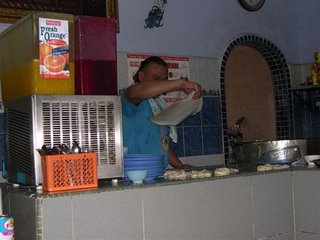 Four-angled beans are also known as "Kacang Botol" in Malaysia.
Four-angled beans are also known as "Kacang Botol" in Malaysia.This vegetable which has a very unique shape (hence its name), grows as a creeper and is a very good source of protein and contains all the amino acids, fatty acids and antioxidants to keep you healthy and in good shape.
However, it does not last long and it is recommended to eat them the very same day of purchase. Choose beans which have green edges.
We have this once in a blue moon, usually stir fried with dried prawns and chilli. Some people eat it raw or dipped into sambal.
This is my recipe for Four-Angled Beans with Dried Prawns and Chilli.
Ingredients
- 300 gms four-angled beans (cut diagonally thinly - about 3 mm thick)
- 50 gms dried prawns (pre-soaked)
- 3 bulbs shallots
- 3 bulbs garlic
- 3 to 4 red chillis (remove seed)
- 1 tablespoon cooking oil
- 1 to 2 teaspoons sugar
- 20 gms belacan (optional)
Pound or blend dried prawns, shallots, garlic, chillis and belacan (optional). (paste)
Heat oil in wok. Add paste above and fry on medium heat till fragrant and slightly brown.
Increase heat to high and add four-angled beans and stir fry for about 2 minutes. Whilst stir frying, add sugar and a sprinkle of water to keep moist.
Serve warm.










